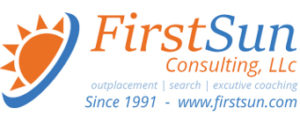#CareerAdvice : #CareerGoals -How to set (and achieve) Goals Based on your Personality Type.
There are some widely accepted practices that can help you reach your goals this year:
- Be clear and specific about what you want to achieve and why.
- Set S.M.A.R.T. goals. Be sure that your goals are specific, measurable, achievable, relevant, and time-bound.
- Recruit the people and assemble the resources you need to succeed.
But there is another factor that has an impact on how we can best set and achieve our goals: Our personality types.
“There’s quite a bit of research about the relationship or association between personality and habit and behavior change,” says organizational psychologist Kenneth Nowack, president and chief research officer at Envisia Learning, a change and performance management firm, and co-author of Clueless: Coaching People Who Just Don’t Get It. Personality plays a role in goal achievement from the first thoughts through seeing through the initial vision. Here are five ways your personality impacts your ability to achieve your goals:
GETTING STARTED
For some hard-charging, Type-A individuals, finding and committing to a goal isn’t the problem–it’s reining them in to ensure that what they’ve chosen is reasonable, says goal-setting expert and motivational speaker Juanita McDowell. This type selects challenging goals, Nowack adds. They’re competing and looking for opportunities to stretch.
More laid-back personalities may not be as driven about their goals, but it doesn’t mean they’re lazy, Nowack says. For this personality type, smaller, more specific goals that allow them to feel comfortable and collect some “wins” will be important to get started.
McDowell uses her own relationship as an illustration. “You can’t take someone like my husband and then expect to have the same goal setting and execution that you would see out of me. He is someone who wants to research every stage of the game. You give him a goal, he’s got to research the heck out of it before he even accepts it as a goal. And then he breaks it down to 10 pieces, where I would want to break it down into five,” she says.
Like this Article ? Share It ! You now can easily enjoy/follow/share Today our Award Winning Articles/Blogs with Now Over 2.5 Million Growing Participates Worldwide in our various Social Media formats below:
FSC LinkedIn Network: www.linkedin.com/in/fscnetwork
Facebook: http://www.facebook.com/pages/First-Sun-Consulting-LLC-Outplacement-Services/213542315355343?sk=wall
Google+: https://plus.google.com/115673713231115398101/posts?hl=en
Twitter: Follow us @ firstsunllc
Question: Want the ‘the best/current articles/blogs on the web’ on Job Search, Resume, Advancing/Changing your Career, or simply Managing People?
Answer: Simply go to our FSC Career Blog below & type(#career, #leadership, #life) in Blog Search: https://www.firstsun.com/fsc-career-blog/
What Skill Sets do You have to be ‘Sharpened’ ?
Continue of article:
GOAL TYPES
Nowack says that the differences between assertive, outgoing go-getters and laid-back, analytical types is also reflected in the types of goals at which each tends to be more adept. The former personality type tends to do better with performance-based goals. They like competition, so they look at their targets in terms of whether or not they’re likely to achieve them.
Their Type-B counterparts tend to prefer learning-based goals. “It’s not so much about competition with others. It’s more about their own intrinsic motivation to want to learn. So really big difference in the type of goals that are set there,” Nowack says.
RESOURCES AND SUPPORT
Personality type may also affect the types of resources you choose to achieve your goals. The hard-driving goal-achievers are more likely to use apps, which allow them to track their progress, Nowack says. They also like gamification, which appeals to their competitive nature. They may have high levels of social support and feel less stress in going after their goals.
Those who approach their goals in a less frenetic way may find other ways of tracking their progress in more informal ways, he adds. They may seek out more personalized peer support or counsel in achieving their goals rather than reaching out to a wide social network.
It’s important to understand the support you need so that you can best set yourself up for success, says career coach Allison Task, author of Personal (R)evolution: How to be Happy, Change Your Life, and Do that Thing You’ve Always Wanted to Do. But accountability can make a big difference in goal achievement. Whether you have a big or small circle of people supporting you, be sure you pick out an individual or a small group to whom you are regularly accountable for your progress, she says.
ADAPTABILITY
Another area where more aggressive achievers have trouble is letting go of a goal or pivoting when it’s a bad fit, Task says. They may be overly focused on a career goal that isn’t working out. Instead of pivoting, they’re going to try to see it through. Or they let one goal take over their lives until it hurts other areas necessary for balance, such as relationships or self-care, Task says. When goals create imbalance, it’s time for them to change.
At the same time, Nowack cites research that finds that sometimes it’s healthier to back off of a goal than to see it through if it’s not working. But, at the same time, his own research found that having a Plan B from the outset tends to undermine achievement. A healthy level of commitment to the primary goal is necessary to see it through, he says. The key is to find the balance between adjusting to what a realistic goal is for you and allowing yourself to adapt if it ultimately turns out to be the wrong choice.
STAYING THE COURSE
How you stay motivated over time also has to do with your personality type, Task says. When she has clients who are excitable, they may underestimate the challenges ahead and get discouraged. Or if they’re indecisive or lack confidence, they may have trouble getting started. Understanding these traits can help them chart their course accordingly, perhaps breaking down the goal into appropriate steps based on their enthusiasm or boldness, she says.
Anchoring–creating a clear picture of their reason for achieving the goal and having a physical or visual reminder of it nearby–can also be helpful to most personality types to help them get through the challenging parts of goal achievement.
For high-intensity goal-setters, focusing on what’s left to do to accomplish the goals–the home stretch–is useful. These achievers crave crossing the finish line, so focusing on the remaining tasks can be an effective way to get them there, Nowack says. But, for the more mellow people, focusing on what’s been accomplished–celebrating the wins–is typically a more effective way of helping them stay motivated.
Of course, most people fall somewhere on a continuum between very aggressive and easygoing types, Nowack says. So, experimenting with what works for you can help you achieve what you’ve set out to do.
FastCompany.com | January 8, 2019










